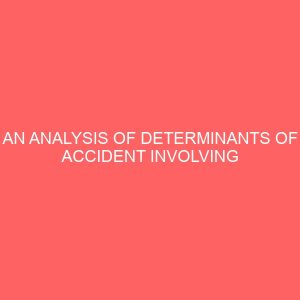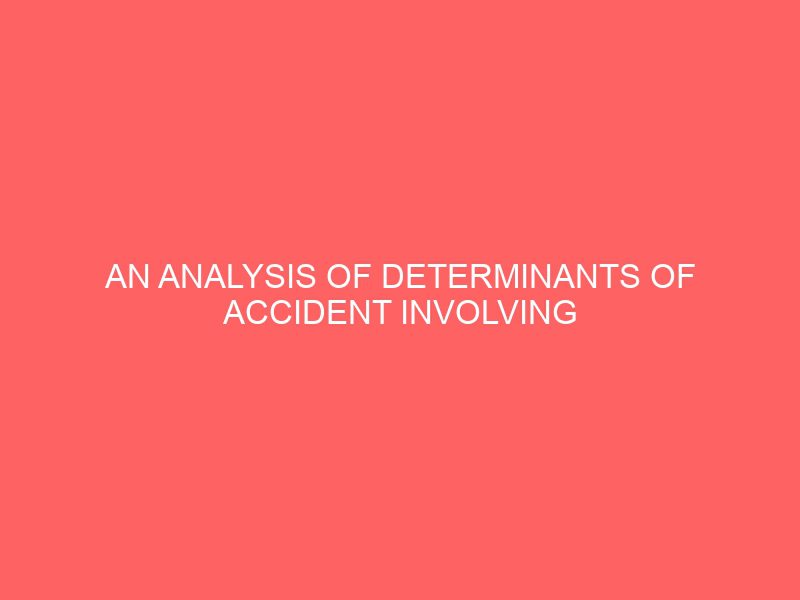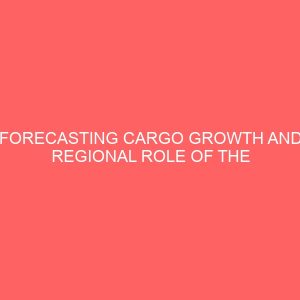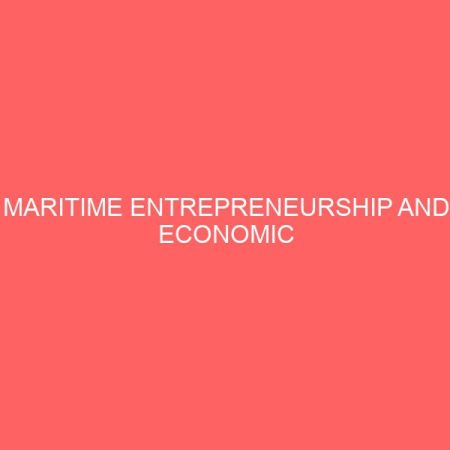Description
Introduction
A vessel accident is an unintended happening. Its severity may vary from no vessel damage to the complete loss of the vessel, no cargo damage, to loss of the entire cargo, and no crew injuries to deaths (Talley, Jin, & Kite-Powell, 2005). Thus, vessels safety regulations and their enforcement focus on prevention and reduction of severity of marine vessel accident. Accident involving marine vessels is common in inland and coastal navigation where requisite safety regulation may not be strictly observed. This is of serious consequence since such occurrences impact on safety of shipping in inland/coastal and inland waterways especially in developing countries.
In recent times, cases of marine vessel casualties involving personal injury, deaths and property/ environmental damage have grown in tandem with increased vessel traffic associated with oil prospecting activities and other commercial seaborne transportation in Niger-Delta/coastal regions of Nigeria. For example, statistics (cumulative figures) based on the study carried out by Dogarawa (2012) indicate that between year 2000 to 2009, a total number of five hundred and fifty- two (552) persons died either as a result of marine vessel and boat capsizing or collision in inland waters of Nigeria. This figure indicates an average fatality rate of about 55 deaths per year excluding vessel and cargo losses, in Nigeria’s coastal and inland waterways in the last ten years. Based on anecdotal evidence from some of the investigated cases; over- loading, excessive speeding, poor attention to weather condition, abandoned wrecks on navigation channels, incompetence and inadequate navigational aids are implicated. Across the globe, similar cases of marine vessels accidents at sea (and in seaports) have been documented. For example: Darbra and Casal (2004) conducted a study on 471 cases of marine accidents that occurred from 1941-2002 in Hong Kong. They observe that 57% of the accidents occurred while vessel was underway at sea and 43% of accident in ports. Various causal factors have been documented; for example, the Maritime Safety Authority of New Zealand asserts that between the periods of 1995 -1996; 49% of marine vessel incidents were attributed to human factors, 35% due to technical factors while 16% were caused by environmental factors. Similarly Rothblum (2002), reports that between 75 and 96% of marine vessel casualties are caused atleast in part by some form of human error. Further empirical evidence also indicates that human error accounts for 84-88% of tanker accidents, 79% of towing vessel groundings, 89-96% of collisions, 75% of all collisions, 75% of fires and explosions (Rothblum, 2002).
Similarly, Talley et al. (2005) observe that UK Thomas P&I Club survey of 1,500 insurance claims for shipping accidents around the world between 1987 and 1990, had found that 90% of the accidents were caused by human error. Two-thirds of the accidents involving personal injury claims were due to human error, e.g. carelessness or recklessness under commercial pressures, a misplaced sense of overconfidence, or a lack of either knowledge or experience. Human factor in this context is defined by Rothblum (2002) as one of the following: incorrect decision, an improperly performed action, or an improper lack of action (inaction). These statistics are disturbing given the level of measures so far adopted by local and international organizations to improve the standard of shipping and navigation.
Maritime safety is governed by the combination of international rules and regulations, national regulations of the flag states and port states, port regulations, rules of the Classification Societies and Insurance Companies.
In addition, quite a number of conventions have been ratified by contracting governments some of which include: International Conventions on Safety of Life at Sea (SOLAS), Standards for Training and Watch Keeping (STCW); International Convention for the Prevention of Pollution from Ships (MARPOL). Others are International Convention on Loadlines (LL) and Convention on International Regulations for Preventing Collision at Sea (COLREG) etc. This regulatory system, which is supported by the Safety Management Systems of the shipping companies serve as a framework for continuous assessment of safety regimes in the world maritime industry. Prior to 1998, the focus of ratified IMO safety conventions was the vessel, e.g. its construction and equipment, rather than human actions aboard the vessel. The subsequent introduction of IMO’s International Management Code for the Safe Operation of Ships and for Pollution Prevention changed the focus from the vessel to human actions on board vessel. By this code, shipping lines are now required to document their management procedures for detecting and eliminating unsafe human behavior. This shift towards regulating human actions aboard a vessel was motivated by the fact that: (i) most vessel accidents are caused by human error; (ii) vessel accident claims are often attributed to human error; and (iii) it is less expensive to change human behavior than it is to redesign vessels for safety (Talley, et al., 2005).
The key to preventing marine vessel accident caused by human related factors however is to identify the types of risk factors, and then apply relevant intervention to check those factors in the future. Many operators undertake such efforts internally, and the IMO and industry trade groups have made significant advances in developing prevention programs that address human factors. However, there is room for improvement, both in terms of preventive initiatives and the metrics used to gauge their effectiveness. The outcome of this research will improve both our understanding of the contribution of human and other causal factors of accident involving marine vessel and hence support implementation of prevention measures that effectively target these factors. The objectives of this study are to:
i. Assess the incidence of marine vessel accidents in Nigeria’s waterways.
ii. Determine the risk factors that lead to marine vessel accidents in Nigeria’s waterways.
Consequently, we postulate and test the following hypothesis at α = 0.05:
i. Human factors related to safety training, overloading of vessel and speeding are not significant causes of marine vessel accident.
ii. Environmental factors related to wind, visibility, sea condition and weather condition do not significantly cause marine vessels accident.
iii. Marine vessel equipment/machinery failure is not significant causal factor of accident.
AN ANALYSIS OF DETERMINANTS OF ACCIDENT INVOLVING MARINE VESSELS IN NIGERIA’S WATERWAYS







